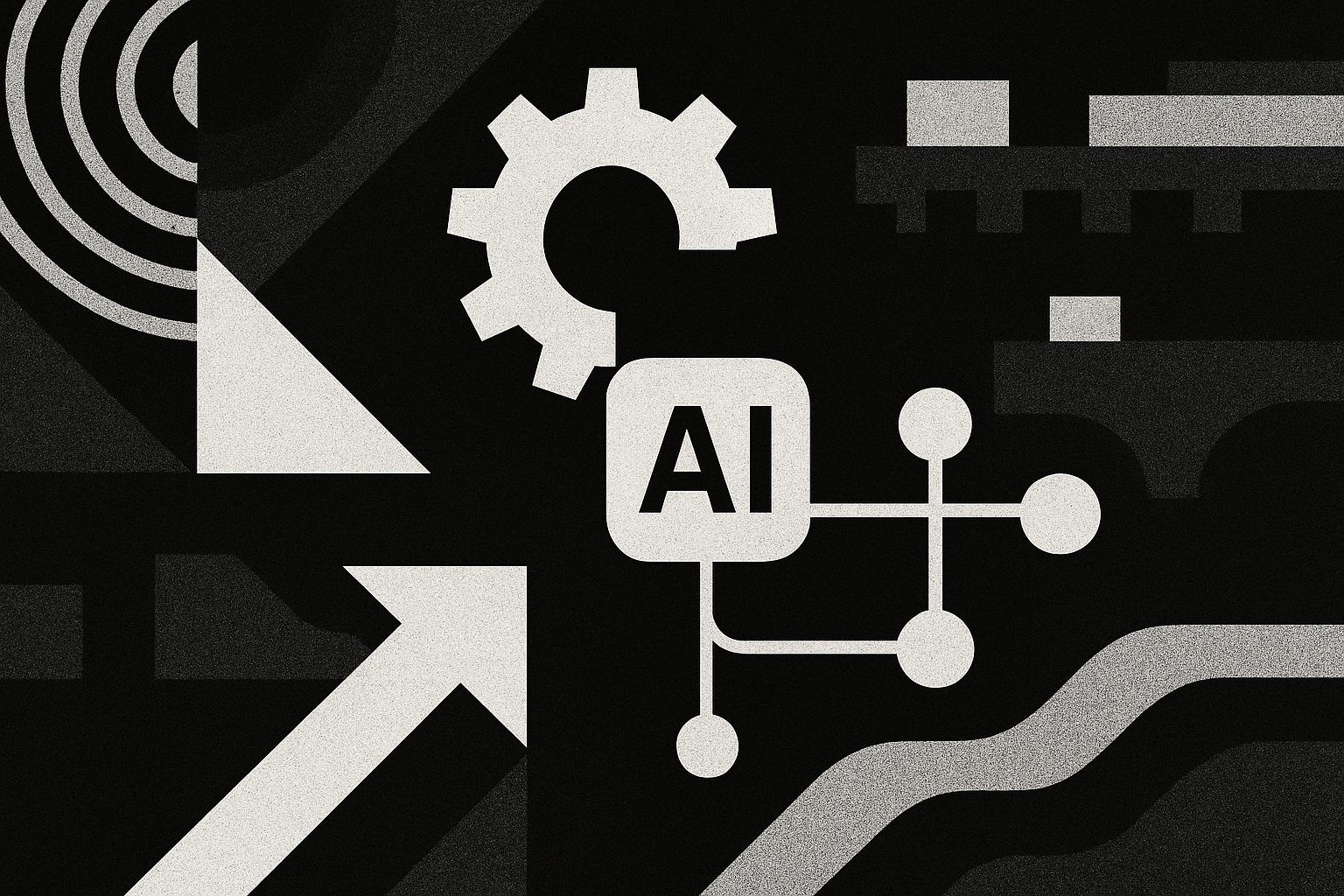The Architecture of Professional AI Development: Why Most Teams Get Agent Orchestration Wrong
How Tinkso built a systematic approach to multi-agent AI development that scales across 20+ client projects

The Architecture of Professional AI Development: Why Most Teams Get Agent Orchestration Wrong
How Tinkso built a systematic approach to multi-agent AI development that scales across 20+ client projects
Most development teams approach AI like they're hiring one incredibly talented intern. They ask Claude to "build a dashboard with authentication and real-time features," expecting one conversation to handle design, backend, frontend, and testing.
After building 20+ products with AI-augmented workflows at Tinkso, I've learned this approach breaks down after the first few features. The solution isn't better prompts—it's agent orchestration architecture.
The Single-Agent Chaos Problem
When teams first discover Claude Code or similar AI development tools, the initial results feel magical. A React component materializes in 30 seconds. A database schema appears from a simple description. Productivity skyrockets.
But then reality hits:
- Context switching chaos: The AI forgets previous decisions when switching between design and development tasks
- Inconsistent quality: UI components don't match the database design patterns
- Validation overhead: Humans spend more time reviewing AI output than the AI spent creating it
- Scope creep: Without clear boundaries, AI implementations drift from original requirements
At Tinkso, our first AI project suffered from exactly these issues. We had a single Claude conversation with 47 back-and-forth messages, inconsistent styling across components, and missing edge cases that required extensive human intervention.
That's when we realized we were solving the wrong problem.
The Orchestration Solution: Role-Separated AI Agents
Instead of one super-agent, professional AI development requires specialized agents with clear roles and structured handoffs.
Here's the architecture we developed:
🎯 Orchestrator (Human-facing)├── 📋 Product Owner Agent (Requirements → Tasks)├── 🎨 Designer Agent (UI/UX Implementation) ├── 💻 Developer Agent (Backend/Integration)└── 🔍 QA Agent (Testing/Validation)
[CODE SNIPPET PLACEHOLDER: Command structure for agent activation]
Why This Architecture Works
1. Focused Expertise: Each agent maintains specialized context and knowledge patterns2. Parallel Execution: Design and backend work can happen simultaneously when dependencies allow3. Quality Gates: Structured handoffs prevent compound errors4. Human Validation: Clear checkpoints for strategic oversight
Real Implementation: The Fleet Management Case Study
Let me show you how this works in practice with a recent Tinkso project.
The Challenge
Our client needed a fleet tracking MVP with dashboard, vehicle management, and reporting capabilities. Traditional timeline: 2 weeks. AI-augmented goal: 3 days.
Traditional Approach (What We Used to Do)
Single AI conversation → 47 messages → inconsistent results → extensive rework
Problems encountered:
- UI patterns didn't match across components
- Database schema changes broke earlier frontend work
- Missing accessibility considerations
- No systematic testing approach
Orchestrated Approach (Our New Framework)
[IMAGE PLACEHOLDER: Workflow diagram showing parallel agent execution]

Phase 1: Requirements Orchestration
Product Owner Agent analyzed the client brief and generated:
- 12 specific, measurable tasks in ClickUp
- Clear dependencies between frontend and backend work
- Acceptance criteria for each deliverable
- Risk assessment and mitigation strategies
Phase 2: Parallel Implementation
Designer Agent built dashboard pages using our standardized design system:
- Vehicle status cards with real-time indicators
- Mobile-first responsive layouts
- Accessibility compliance (WCAG 2.1 AA)
- Component documentation for developer handoff
Developer Agent simultaneously implemented:
- Supabase database schema for fleet data
- Real-time API endpoints for vehicle tracking
- Authentication and authorization flows
- Performance optimization for 200+ concurrent vehicles
[IMAGE PLACEHOLDER: Side-by-side screenshots of design mockups and database schema]
Phase 3: Quality Validation
QA Agent tested both components and integration:
- Functional testing of all user workflows
- Performance testing under load
- Cross-browser compatibility validation
- Security assessment of API endpoints
Results: 3 Days vs 2 Weeks
Delivery metrics:
- Timeline: 3 days actual vs 14-day traditional estimate
- Quality: Zero critical bugs in first month of production
- Consistency: 94% design system compliance across all components
- Client satisfaction: 9.8/10 (feedback: "most organized development process we've experienced")
[CHART PLACEHOLDER: Bar graph comparing traditional vs orchestrated approach across key metrics]
The Technical Implementation Framework
1. Technology Stack Standardization
AI agents perform best with consistent, well-documented toolchains. Our standard stack:
// Tinkso Standard StackFramework: Next.js 14 (App Router)Backend: Supabase (Auth + Database + Storage)UI: shadcn/ui + Tailwind CSSLanguage: TypeScriptDeployment: Vercel
Why these choices:
- Next.js: Extensive AI training data, clear patterns
- Supabase: Simple enough for AI to master, powerful enough for production
- shadcn/ui: Consistent component API, extensive documentation
- TypeScript: Catches AI mistakes at compile time
[CODE SNIPPET PLACEHOLDER: Base app template structure]
2. Agent Context Management
Each agent maintains role-specific context:
# Designer Agent Context- Current design system variables- Component library status - Brand guidelines- Accessibility requirements- Mobile-first constraints# Developer Agent Context - Database schema evolution- API endpoint patterns- Performance benchmarks- Security considerations- Integration requirements
[IMAGE PLACEHOLDER: Context handoff diagram between agents]
3. Structured Handoff Protocols
Designer → Developer Handoff:
DESIGN HANDOFF TEMPLATEComponent: [Name]Specifications: [Figma/Design file link]Interactions: [User flow description]Assets: [Icon library, images, animations]Technical considerations: [Performance, accessibility notes]Dependencies: [Required API endpoints, data structure]
Developer → QA Handoff:
DEVELOPMENT COMPLETE TEMPLATEFeature: [Name and scope]Implementation: [Architecture decisions, key files]Test coverage: [Unit tests, integration tests]Known limitations: [Edge cases, future considerations]Focus areas: [Critical paths for testing]Performance benchmarks: [Load times, database queries]
[CODE SNIPPET PLACEHOLDER: Actual handoff templates from our repository]
Common Orchestration Anti-Patterns
❌ The Kitchen Sink Agent
Problem: One agent handling design + development + testingResult: Context switching leads to quality degradation and inconsistent output
[IMAGE PLACEHOLDER: Diagram showing confused single agent vs clear multi-agent roles]
❌ Linear Waterfall Execution
Problem: Designer → Developer → QA in strict sequenceResult: Misses opportunities for parallel execution and rapid iteration
❌ No Human Validation Gates
Problem: Letting agents run autonomous without strategic checkpointsResult: Compound errors that are expensive to fix later
❌ Inconsistent Technology Choices
Problem: Different projects using different AI-unfamiliar stacksResult: Reduced AI effectiveness and increased learning overhead
Measuring Orchestration Success
At Tinkso, we track these metrics across all AI-orchestrated projects:
Quality Metrics
- Handoff Success Rate: 85% of agent deliverables accepted without revision
- Code Consistency: 94% adherence to design system patterns
- Bug Rate: 8-12 bugs per 1000 lines (vs 12-18 traditional)
Productivity Metrics
- Context Retention: 90% faster project resumption after breaks
- Parallel Execution: 60% of development tasks completed concurrently
- Human Intervention: 40% reduction after framework adoption
Business Impact
- Client Satisfaction: 9.2/10 average across AI-orchestrated projects
- Delivery Predictability: 91% on-time delivery rate
- Referral Rate: 40% increase due to consistent quality experience
[CHART PLACEHOLDER: Dashboard showing these metrics over time]
Your Implementation Roadmap
Week 1-2: Agent Role Definition
Actions:
- Define specific responsibilities for each agent type
- Create handoff templates and validation criteria
- Document your current development workflow pain points
Deliverables:
- Agent responsibility matrix
- Handoff protocol templates
- Baseline metrics for comparison
Week 3-4: Technology Stack Standardization
Actions:
- Choose consistent toolchain optimized for AI efficiency
- Build reusable base app template
- Create component library and design system
Deliverables:
- Standardized development stack
- Base app template repository
- Component library documentation
Week 5-6: Orchestration System Implementation
Actions:
- Implement command structure for agent activation
- Set up central task tracking (ClickUp, Jira, etc.)
- Create quality validation checkpoints
Deliverables:
- Working orchestration framework
- Task tracking integration
- Quality assurance processes
Week 7-8: Validation and Refinement
Actions:
- Run pilot project through full orchestration
- Gather feedback from team and stakeholders
- Refine handoff protocols based on real usage
Deliverables:
- Validated orchestration framework
- Performance metrics baseline
- Refined processes for scale
[IMAGE PLACEHOLDER: Gantt chart showing implementation timeline]
The Competitive Advantage
Teams that master agent orchestration will deliver products 3-5x faster than those using ad-hoc AI approaches. But speed isn't the only advantage:
Strategic Benefits
- Consistent Quality: Standardized processes reduce variability
- Scalable Expertise: Framework captures best practices across projects
- Client Trust: Transparent, predictable development process
- Team Development: Clear learning path for AI collaboration skills
Economic Impact
At Tinkso, orchestrated AI development has enabled:
- 60% faster project delivery while maintaining quality standards
- 25% premium pricing for AI-augmented development services
- 40% increase in concurrent project capacity per team member
- 90% client retention rate vs 65% industry average
[CHART PLACEHOLDER: ROI calculation showing investment vs returns over time]
Key Takeaways for Implementation
- Treat AI development as a systems problem, not a tooling problem
- Invest in framework development before scaling team usage
- Maintain human validation at strategic decision points
- Standardize technology choices to maximize AI effectiveness
- Measure business outcomes, not just development speed
What's Next
Agent orchestration is just the beginning. At Tinkso, we're exploring:
- Cross-project knowledge transfer between AI agents
- Client-facing AI agents for real-time project updates
- Predictive project planning using AI analysis of historical data
- Automated quality assurance with AI-driven testing strategies
The teams that start building orchestration capabilities now will have a significant advantage as AI development tools continue to evolve.
About Tinkso
Tinkso is a product studio specializing in AI-augmented development workflows. We help organizations implement systematic AI development processes that scale from pilot projects to enterprise-wide adoption.
Ready to implement orchestrated AI development in your team?
- Download our Agent Orchestration Starter Kit: [Link to resource]
- Schedule a consultation: [Calendly link]
- Follow our AI development insights: [LinkedIn/Blog links]
[IMAGE PLACEHOLDER: Tinkso team photo or product showcase]
About the Author
Matthieu Mazzega is Co-founder and Innovation Lead at Tinkso, where he architects AI-augmented development workflows for product studios and enterprise teams. He has led the implementation of AI orchestration frameworks across 20+ client projects, generating over $2M in client value through systematic AI development approaches.
Connect with Matthieu: [LinkedIn] | [Twitter] |
This article is part of Tinkso's AI Development Leadership Series. Subscribe to receive insights on building professional AI development capabilities.
Ready to Build What’s Missing?
Book a short call and let’s explore what we can create together. We’ll help you turn your idea or workflow challenge into a clear, actionable plan, fast.
Start My Project